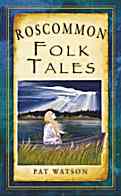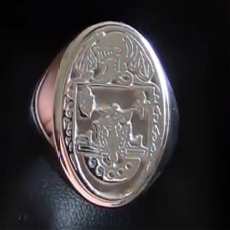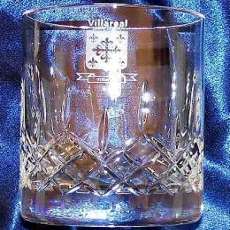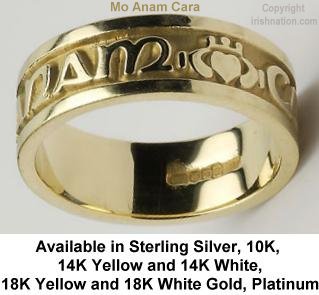-
Genealogy & Names
-
Tourist Information
-
Culture & Reference
|
April 2020 
Irish Sunset from Free Photos Of Ireland |


find out more |

| Popular Articles from Recent Newsletters: |


|
Incredible! Nearly four months after the General Election in Ireland there is still no new Government in place in Ireland! The February election was a triumph for Sinn Fein and a severe rebuke to both the Fine Gael and Fianna Fail Parties. Despite this, it is these two latter Parties who actually look set to finally form the next Government, in coalition with the Green Party. The snails-pace that the initial negotiations were progressing at was interrupted by the COVID-19 Pandemic which really took a hold in Ireland in mid-March. The country went into semi-lockdown with businesses closed and unprecedented emergency laws being enacted by the outgoing Government. It is possible that the situation would have been allowed to go on like this for months except for the fact that the Irish Constitution requires the (mostly ceremonial) lower house of Parliament, the Seanad, to reassemble after a General Election in order for new laws to be passed. Since the Seanad requires several of its members to be appointed by the new Taoiseach, and since there is no new Taoiseach in place, Ireland is in the bizarre position of not being able to legally implement any new laws until the new Taoiseach is elected and a Government formed. And with negotiations still crawling along this could still takes weeks if not months. And this at a moment of national and international crisis. A disgrace. It has taken months but finally there is the beginning of some semblance of oversight and review in Ireland of the response to the COVID-19 crisis. It was not until May 6th 2020 that the Special Committee on Covid-19 Response was established by the Irish Parliament (the Oireachtas). Initial hearings have focused on the issues in Nursing Homes with harrowing details emerging about the way many of these nursing home staff felt abandoned by Government and had to resort to using Painters overalls and decorators face masks in the absence of their own PPE (Personal Protective Equipment). The 'Democratic Deficit' in the country has become more and more apparent in the wake of COVID-19. Important meetings between Government agencies and Health Care Agencies about dealing with the virus were not even recorded (by taking minutes of the meeting). There is no record if there were any dissenting voices in these meetings or whether there were any alternative ideas or suggestions. The information that has been released to the Irish public has also been carefully selected and edited. For example there was much criticism about the lack of information provided about 'hotspots' (towns, localities or districts that have severe virus clusters). Surely this is basic information to inform the public about? Officials hide behind Privacy laws when they are occasionally (rarely) challenged about this issue. Similarly just about any decision made by the current caretaker Government can be justified as being 'on the advice of the Medical Professionals'. Similarly the Health Professionals who are advising the Government regularly cite the World Health Organization recommendations as the reason for their own recommendations to Government. The lack of oversight, opposition opinion and media questioning is staggering. Everyone is doing their best. But surely we can all 'do our best' in a recorded and honest manner, one that we can learn from in the future, rather than the current methodology that certainly has no place in a Democratic society. |

|
Although early cartographers' fears and ignorance have been largely dispelled by Man's adventurous spirit, some of the areas they covered are still pretty much a mystery. 
We now accept the salty sightings of mermaids, sea serpents and the Kraken for what they really are – walrus, seal, conger eel and the like. But a growing body of evidence suggests we should turn around and instead peer inland, then deep down into those lakes and still waters that are part of our island's mystery and magic. References to Irish lake monsters first appear in the 7th century Life of St Chua of Balla, County Mayo. Some 300 years later the famous Book of Lismore tells of St Seonas's confrontation with a 'repulsive, outlandish, fierce and very terrifying monster' at Scattery Island, County Clare. St. Coemgen is reputed to have subdued a serpent in the Upper Lake at Glendalough, Co. Wicklow. But for more recent accounts we have to wait until the 19th century, when a young woman wading in to Lough Muck to pick a bog-bean was startled by a great splash. She looked up to see a strange creature coming across the water towards her. She turned and fled, wise girl. There were similar sightings over the next few years. Now Lough Muck is something of a tiddler in the lake stakes, posing the obvious question: how could such a small body of water sustain what are usually deemed as sizeable aquatic mammals? Some lakeside farmers have attributed their mysterious sheep losses to the monsters' ability to forage equally well on land too. For the sceptic there is ample documentary proof, particularly in the period just prior to the First World War. An enormous 'eel' became trapped in the 50 centimetres-wide culvert between Loughs Crolan and Derrylea in Co. Galway. The creature was said to be so repulsive and noxious that very few ventured close enough to make a detailed examination and it was eventually allowed to just rot away. Shortly thereafter another 'stranding' occurred, this time at Ballynahinch. Approximately 8-9 metres long and 'thick as a horse', it became trapped under the bridge that spans the town's river, near the castle. Patrick Connell, a blacksmith from Cashel, forged a barbed spear with which to kill the animal but a thunderstorm flushed it free before he arrived. It was seen again, the last time in 1961. Hardly a county has been spared, its generally hybrid appearance lending it the name Horse-eel by terrified witnesses. Thomas Crofton Croker, a 19th century folklorist from Cork, described it as 'a great conger eel, 7 yards long and as thick as a bull in the body, with a mane on it like a horse'. Lady Augustus Gregory, co-founder of the Abbey Theatre, refers to it in similar fashion in her book, Visions and Beliefs of Western Ireland. There are several classic sightings which still stand the test of time. The first, on a fine June evening in 1954 on Lough Fadda in County Galway, was described by Georgina Carberry, a librarian from Clifden and an experience angler. She and some friends had just returned to the shore after a satisfactory catch when they saw a dark object undulating towards them. It came within twenty metres, dived and re-surfaced. It was 'a horrible, long-backed creature with a forked or V-shaped tail'. Georgina had a distinct feeling of something wormy: 'You know – creepy. The body seemed to have movement all over it all the time.' She had nightmares for weeks and didn't go back there for some seven years. But perhaps the strangest of all occurred at Shanakeever, again in Galway. On what we Irish refer to as a 'soft day' Patrick Canning went down to the lake shore to fetch his donkey. He then saw what appeared at first to be a foal circling it, before realising his mistake. 'It was just like she'd had a foal, d'ye know... going round.' This creature was long and black but somehow horse-like, with legs and what could be ears. But at a distance of almost 200 metres it was difficult to be certain. Sensing his presence, it seemed to slide into the lake. It – or its mate – is still being seen around there. Lough Mask, named by Viking explorers after their Swedish word for 'worm' or 'caterpillar', also has a history of monstrous marauders. But the most detailed account so far is by three Dublin priests – Fathers Matthew Burke, Daniel Murray and Richard Quigley. Fishing on Lough Ree on the clear evening of May 18th 1960, they observed, about 80 metres away, a strange object moving through the water, two sections of it protruding. What appeared to be 50-60 centimetres of neck ending in a serpentine head, followed by a hump, about as high as the neck, the whole extending some two metres. It moved serenely past the transfixed trio, slowly submerging without fuss or bother. Their subsequent report to the Inland Fisheries Trust brought forth a flood of reports of similar sightings, some less serene, with fishing lines dragged under and boats cut free to avoid capsizing. Of course, most countries with an abundance of lakes have aquatic legends to go along with them. Take Scotland... or one of the Scandinavian countries – Norway? Nessie leads, of course, and in Norway there is what they claim is the 'eeriest'of waterways, the Fjord of the Trolls, Lake Storjsson. It has a monster whose malevolent intentions reach far beyond the water's shore, so much so that exorcisms have been performed in an effort to at least neutralise its effects on those who hunt or have attempted to catch whatever lurks in its deep, dark waters. After a conference on psychical disorders in Sweden in 1972 the Reverend Dr. Donald Omand, a noted exorcist, along with F.W. Holliday, a renowned monster hunter (!), and Reverend Dom Robert Petipierre of the Anglican Order of St Benedict, agreed to perform a similar ceremony on Loch Ness. It took place on June 2nd 1973 and afterwards Dr. Omand said he felt satisfied with the results, although mentally and physically 'drained'. Unfortunately, the sightings continue. So just what are these horse-headed, serpentine quadrupeds who inhabit our dark-brown peaty depths? Given such a composite description the nearest creature that fits is the plesiosaur, somehow left behind from the Mesozoic period. Why – how? – are they still here? Why is the shark, for that matter, after 300 million years? But a bigger question still – is there still a place for such prehistoric 'baggage' on our shrinking planet? As they don't appear to be anti-human why not take the positive view, i.e., adopt them? If we can save the whale why not old plessie? We've already had all the Hollywood interpretations, can it be such a great leap of faith to accept the real thing, hmm? |


find out more |

|
The legend of the Monster of Lough Ree has always been, but smart modern people said it could not be true, as the lake was not deep enough to hide a monster. Moreover, they said that those who claimed to have seen it were probably poitin makers who were under the influence or were trying to scare off the police or customs men. The clever monster was not impressed so he presented himself to three sober clergymen of impeccable character in the 1950s. They described him as being a giant eel-like creature about two and a half feet thick and up to forty or fifty feet long. For the few minutes that they saw him he had his head and four bodily loops above the water. They thought he had a lump on his head and mouth and teeth like a pike. Controversy reigned for a time but the real story never came to light. 
Percival and Donald decided to make their names by capturing the Lough Ree Monster. To this end, they contacted Mick and Pat and employed them as guides and advisers. Mick introduced them to his brother-in-law, Tom, and his wife, Mary, who had a house with a spare room where Percival and Donald could board for only 1 pound each per day. They were lucky to get lodgings so near the lake! Pat advised them to go to his brother-in-law, Joe, the blacksmith, and get him to make a giant hook. At that time, the local forge was the only sort of leisure centre available to male layabouts, newsmongers, gabsters and nosy backbiters. There was always news and action there, and in order to keep the fair side of the blacksmith, those fellows would help with sledging, fitting iron tyres on cart wheels or helping with young horses. Mick advised the Englishmen that their adventure needed to be kept strictly secret and that nothing would remove the hangers-on from the forge, only free drink. Mick suggested to Percival that a 5 pound float for a free bar in the local shebeen (illegal pub) would empty the forge so that they and the blacksmith could get down to business. Percival complemented Mick on his shrewdness and paid the money. He did not know that the shebeen was owned by Pat's uncle. Now, Joe, Percival, Donald, Pat and Mick got to work. The hook had to be designed and made properly. A six-foot-long crowbar an inch thick was selected. Joe heated it in the fire, two feet from one end, and he and Pat lifted it on to the anvil with big pincers. Then Joe beat it into a lovely hook. It was heating time again so that the point of the hook could be beaten and barbs cut out with a chisel and turned so that the hook would hold fast to the captured creature. This was then cooled and the other end heated white and beaten flat before a hole was punched in it, to hold a twenty-yard long chain. Just about that time, another brother-in-law, Tim, had a litter of little piglets and Pat acquired one for bait on the giant hook. Pat only charged Percival a pound for the pig. The chain was anchored to a tree on land and the hook with the dead pig on it was brought out by boat seventeen yards and then dropped from the far side of the boat so that it hung nine feet down over the side. As they were afraid of the monster, they anchored the boat there and returned to land in another boat. Mick owned the boats but he only charged 1 pound per boat per day. The Englishmen were rich. They watched from the shore for several hours and when their patience wore out they went out and pulled up the hook. The pig was gone. 'Well, doesn't that beat Banagher,' said Mick. 'The bloody monster is as clever as a Christian. We will have to secure the bait better.' They tried again the next day and this time they tied the pig on with a rope. It did no good and when they pulled up the hook there was nothing there but the rope. This went on every day, with more and better ropes used until all twelve of the litter of little pigs were gone. Every night Pat, Mick, and Tim procured expensive poitin for Percival and Donald, who drank themselves to sleep. As they were eating their breakfast on the eleventh morning, Mary, who always had too much to say, asked: 'Are ye going to feed another pig to the pike today?' The penny dropped with Donald. 'Is that what has been eating out bait? There must be no monster at all. We have been wasting our time. We will not go on the lake again. How much is our bill? We will be leaving today.' 'What sort of an Óinseach [fool] are you woman?' said Tom. 'How could pike get near the bait, sure the monster would eat them too. You're talking nonsense like always.' But the damage was done. The Englishmen were onto the ruse. That's when Pat and Mick arrived. Tom, interrupted often by his wife, told of the morning's conversation. 'Well, isn't that the best ever you heard,' said Pat, 'but don't worry, we'll catch him yet. We need a bigger pig with several ordinary fish hooks inserted in him and then, every pike that bites him will get caught and make a better bait altogether for the monster.' 'I am not convinced,' said Percival. 'I have lost faith in you, your bait, your boats and the monster. In fact, I'm sceptical as to whether there ever was a monster.' 'Didn't you tell me that your brother climbed the highest mountain in Europe, Mattie's Horn?' asked Mick, 'and I bet he didn't give up just when he could see the top.' 'It's the Matterhorn,' said Percival with a condescending smile at the ignorant peasant. But he was stung by the suggestion that he was a quitter or that he was less than his brother, the mountaineer. 'I suppose we could give it one more go if you are agreeable, Donald, and if another pig is available.' By sheer luck, another brother-in law had arrived from Gaily Bay with a bigger pig in an ass's cart. Not only that, in spite of his great size, he was prepared to sell him for just 2 pounds. Luck struck again when a stranger turned up with fifty special hooks to implant in the pig and he even had short lines to attach to the hooks and to the big hook. 'It looks as if fate is on our side this time,' said Donald. The stage was set for the final trap to catch the monster. The pig was killed. The hooks were inserted and the pig was tied to the big hook. All was loaded on to the boat. It was rowed out the seventeen yards. The pig, complete with big hook and fifty small hooks, was dropped over the side. Then all hell broke loose! The chain became taut and was wrenched over the end of the boat nearly overturning it. The tree that the chain was anchored to shook as great pressure was put on it. Then everything went quiet. Tim and Tom who were on the shore pulled in the slack chain. There was nothing on the end of it and the big inch thick hook had been straightened out. Pat, Percival and Donald who had been in the first boat, were busy hiding their embarrassment at what the fright caused. Mick was in the other boat with a bottle on his head. There was a monster after all. Everybody but the English were surprised. Pat and Mick did much less boating on the lake thereafter, and Percival and Donald had the best fishy story of all time. 
Pat Watson 'The Monster of Lough Ree' is one of sixty lyrical yarns from 'Original Irish Stories' by Pat Watson. Visit: https://goo.gl/FDp48v or you can email the author here: pjwatson77@gmail.com |

|
||||


The name Morrigan means 'phantom queen' (or 'great queen') and describes a Goddess from old Ireland that was very associated with war, destiny, fate and death. She was a shape-shifter and frequently appeared as a black crow, an ominous sign for those who saw her prior to battle. Legend has it that the Morrigan was in fact a triad of sisters, often named as Badb, Macha and Nemain, while the Morrigan is also remembered as the triad of the land Goddesses Ériu, Banba and Fódla. Such was her influence over the land of Ireland that it is from áariu that the word 'Eire' and 'land' ('Ériu-land'), developed into 'Ireland', in effect naming the country! The most famous tales of the Morrigan always center around Cuchulainn at the time he defended Ulster from the army of Connaught, led by Queen Maeve. This famous battle raged for months and cost countless lives. By invoking the right of single combat Cuchulainn was able to defeat warrior after warrior. It is at this point that the Morrigan attempted to seduce Cuchulainn, offering herself to him before battle. But Cuchulainn refused Morrigan, despite her great beauty. The Morrigan was outraged and used her shape-shifting powers to transform into an eel, tripping Cuchulainn as he traversed a fjord. The hero recovered though and lashed out at the eel, breaking its ribs. She then transformed into a wolf, scaring cattle and driving them towards Cuchulainn who responded with a sling-shot, blinding the Morrigan in one eye. Once again the Morrigan transformed! This time she changed into a heifer leading the stampede towards Cuchulainn. But once again the famed prowess of the greatest mythic figure in Irish history thwarted her evil ambition. He fired away another slingshot, breaking her leg forcing the Morrigan into a humbling retreat. One that she would never forget. After his victory in battle Cuchulainn traveled from the battle-site where he encountered an old woman milking a cow. Again the Morrigan had transformed. The haggard woman was blind in one eye, with damaged ribs and a broken leg but despite having inflicted these wounds Cuchulainn did not recognize her new form. She tricked him by giving him three sips of milk. He blessed her on every occasion and when each had been taken the wounds inflicted on the Morrigan were healed. By Cuchulainn's own blessings! The Morrigan would again appear before Cuchulainn shortly before his death. On his way to yet another battle he met a woman washing bloody armor, a sure and terrible portent of impending doom. Sure enough Cuchulainn was finally conquered. Despite being mortally wounded he tied himself to a boulder with his own innards, in the hope that his upright appearance would continue to terrify his enemies. It is only when a black crow finally landed on his shoulder that his death was finally revealed. The Morrigan also appeared in other mythic adventures. In the Lebor Gabála Érenn (The Book of the Taking of Ireland) of the twelfth century the Morrigan is named among the Tuatha De Danann as a daughter of daughter of Ernmas, who in turn was a granddaughter of Nuada. In the 'Battle of Mag Tuired' (The Battle of Moytura), the Morrigan is said to have mated with the Daghda, with one foot on each bank of a mighty river and later promised to summon the magicians of Ireland to aide the Tuath De Danann in their battle against the Fomorians. In the battle itself the Morrigan recited a poem or chant that so terrified the Fomorians that they were driven back into the sea. The incredible Morrigan! The shape-shifting Phantom Queen. ~~~~ You can read more incredible stories of Irish Mythology Here. |

|
The winner was: vanmckee1008@yahoo.com who will receive the following: A Single Family Crest Print (usually US$24.99) Send us an email to claim your print, and well done! Remember that all subscribers to this newsletter are automatically entered into the competition every time. I hope that you have enjoyed this issue! 
by Michael Green, Editor, The Information about Ireland Site. http://www.ireland-information.com Contact us (C) Copyright - The Information about Ireland Site, 2019. 17 Páirc Ghrainbhil, Carraig Dubh, Contae Baile átha Cliath, Ireland Tel: 353 1 2893860 |

|
MARVELOUS GIFTS FOR ANY OCCASION FREE DELIVERY TO YOUR DOOR 
BIG REDUCTIONS! Stunning Family Crest Signet and Seal Rings 
DISCOUNTED FOR A LIMITED TIME Elegant Cufflinks 
Incredible Family Crest Plaques Made in Ireland 
Superior Framed Family Crest Parchments 
Gorgeous Glistening Galway Crystal 'Your-Name' Old Irish Sign NEW DESIGNS! 
From US$34.99 - Free Delivery 
New Designs available on our Coffee Mugs 
Personalized Licence Plate 
Personalized First Name Plaque. Great for Kids! 
'Your-Name' Polo & Tee Shirts 
From US$69 Delivered BIG REDUCTIONS! Stunning Engraved Rings from Ireland with Irish Language Phrases. Mo Anam Cara: My Soul Mate Gra Dilseacht Cairdeas: Love, Loyalty, Friendship Gra Go Deo: Love Forever Gra Geal Mo Chroi: Bright Love of my Heart SEE MORE GREAT OFFERS AND DISCOUNTS AT: IRISHNATION.COM FREE DELIVERY FOR A LIMITED TIME! |
